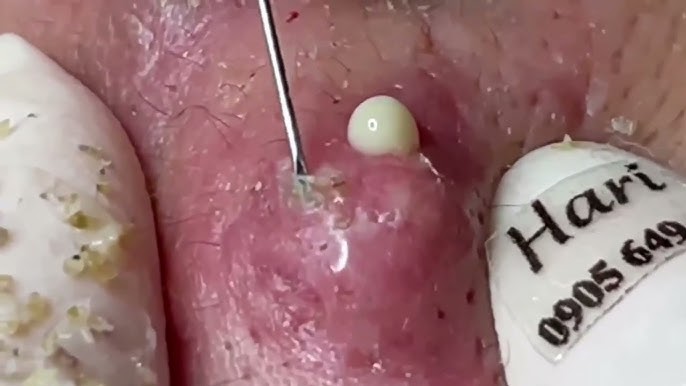Extracting big cystic acne or blackheads at home can be risky and is generally not recommended without professional guidance. Here’s why — and what the safest options are.
❌ Don’t Do This at Home for Cystic Acne
Cystic acne:
-
Forms deep under the skin
-
Contains pus and inflammation
-
Is not the same as a blackhead or whitehead
Trying to extract cystic acne can:
-
Worsen inflammation
-
Lead to scarring or infection
-
Push bacteria deeper
Instead:
👉 See a dermatologist who can treat cystic acne with:
-
Cortisone injections (fastest relief)
-
Prescription medication (antibiotics, retinoids, or Accutane)
-
Drainage and extraction, if absolutely necessary, using sterile tools
✅ Safe Blackhead Removal (Not for Cysts)
For standard blackheads (open comedones), you can safely try:
-
Warm compress or steam
-
Softens pores and loosens sebum
-
-
Gentle chemical exfoliation
-
Salicylic acid (BHA) unclogs pores
-
Glycolic or lactic acid (AHA) for surface exfoliation
-
-
Pore strips (occasional use only)
-
Can help on nose or chin but may irritate sensitive skin
-
-
Comedone extractor tool (with caution)
-
Disinfect first
-
Apply gentle pressure
-
Never force it—if it doesn’t come out easily, stop
-
-
Non-comedogenic skincare routine
-
Use oil-free moisturizers
-
Wash face twice daily
-
Avoid heavy makeup or pore-clogging products
-
When to See a Pro
If you have:
-
Large, painful bumps
-
Frequent blackheads
-
Scarring
-
No success with over-the-counter products
➡️ Visit a dermatologist or licensed esthetician for safe extractions and medical-grade treatments.
🧪 Understanding Cystic Acne vs. Blackheads
Cystic Acne
-
Characteristics: Deep, painful, inflamed lumps beneath the skin.
-
Cause: Infection of hair follicles with oil and bacteria.
-
Treatment: Requires professional intervention.
Blackheads (Open Comedones)
-
Characteristics: Small, dark spots on the skin’s surface.
-
Cause: Clogged pores filled with oil and dead skin cells; the dark color results from oxidation.
-
Treatment: Can often be managed with proper skincare.
⚠️ Risks of At-Home Extraction
Attempting to extract cystic acne or blackheads at home can lead to:
-
Skin Damage: Increased irritation and potential scarring.
-
Infection: Introducing bacteria into the skin.
-
Worsening Acne: Pushing debris deeper into pores.
Dermatologists emphasize that squeezing pimples and other acne blemishes can worsen the condition, leading to permanent acne scars, more noticeable acne, and infections.
✅ Safe Blackhead Removal Techniques
If you’re dealing with blackheads, consider the following dermatologist-recommended methods:
-
Chemical Exfoliation: Use products containing salicylic acid (BHA) or glycolic acid (AHA) to unclog pores.
-
Gentle Cleansing: Wash your face twice daily with a mild cleanser to remove excess oil and dirt.
-
Topical Treatments: Apply non-comedogenic moisturizers and consider using topical retinoids to prevent clogged pores.
-
Professional Treatments: Consult a dermatologist for procedures like extractions, chemical peels, or laser therapy.
Experts advise against using pore strips or at-home extraction tools, as they can irritate the skin and may not effectively remove deep blackheads.
🩺 Professional Treatment Options
For persistent or severe acne, professional treatments may be necessary:
-
Corticosteroid Injections: Reduce inflammation and speed up healing of cystic acne.
-
Incision and Drainage: A sterile procedure to open and drain large cysts.
-
Prescription Medications: Oral antibiotics or retinoids to control acne.
Only a dermatologist should perform these procedures to ensure safety and effectiveness.
🧴 Skincare Tips to Prevent Blackheads
To minimize the occurrence of blackheads:
-
Avoid Heavy Products: Steer clear of thick creams or oils that can clog pores.
-
Regular Exfoliation: Use gentle exfoliants to remove dead skin cells.
-
Sun Protection: Apply a non-comedogenic sunscreen daily.
-
Healthy Diet: Maintain a balanced diet to support skin health.
Consistent skincare habits can significantly reduce the formation of blackheads and promote overall skin health.
